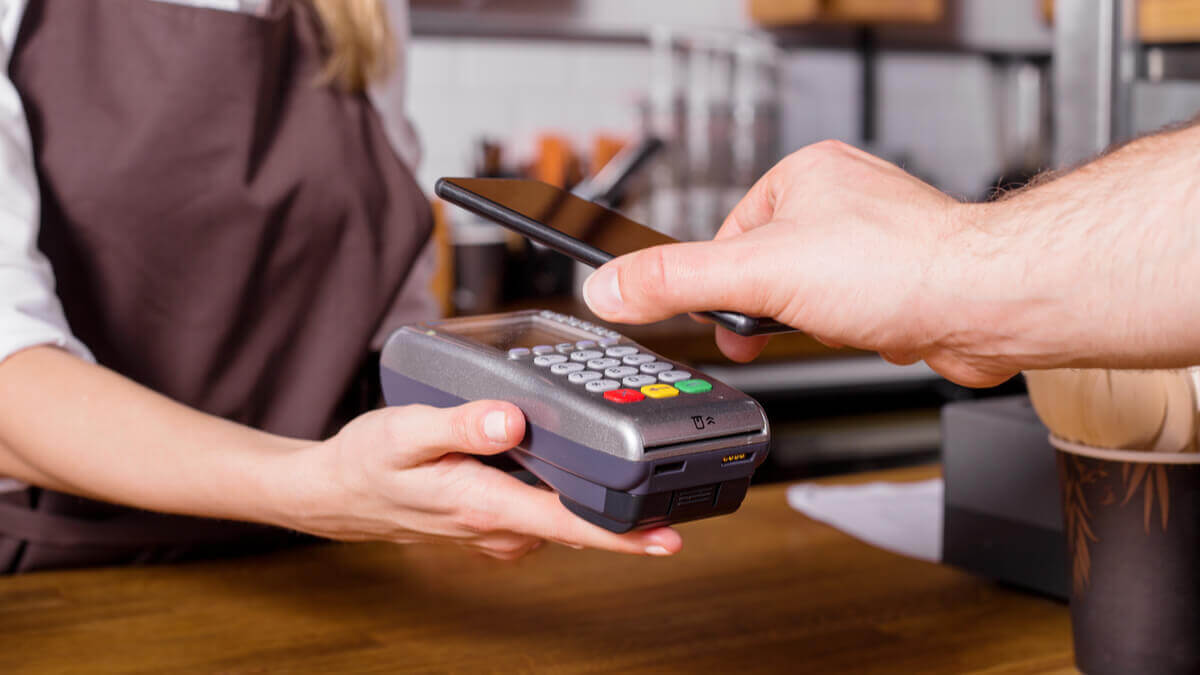SIPP for non-UK residents: Complete guide
Read our helpful guide to SIPPs for non-UK residents, covering everything you need to know about Self-Invested Personal Pensions for UK expats.

If you’re something of a shopaholic, you’ll want to know about the most convenient, cheapest and safest way to pay for your purchases. There are lots of ways to do it beyond cash and cards, whether shopping online or in the real world.
A couple of the digital options you’ll come across in the UK are Google Pay and PayPal. Both of these payment services can be used for online shopping and as a mobile wallet to pay in physical shops on the high street.
But which is better - PayPal or Google Pay? Read on for a helpful comparison of the two, looking at everything from pros and cons to fees, limits, security and much more.
We’ll also show you a great alternative for making online and real-world purchases in multiple countries and currencies - the Wise card from the money services provider Wise.
Learn more about the Wise card 💳
Google Pay or GPay is a mobile payment service from search engine giant Google. It’s primarily known as a mobile wallet, letting you store your payment cards virtually on your phone.
You can also store things like train tickets and supermarket loyalty cards, keeping everything in one place. It essentially turns your phone into a wallet, so you don’t need to carry physical cards or even train tickets around with you.
When it’s time to pay, you simply open your Google Wallet app on your phone and tap at the checkout to pay contactlessly. You can set a primary payment card, or choose in the app before paying.
A potentially big drawback for some though is that you can only use the Google Wallet app on an Android device. This means that it’s not an option for those with iOS phones.
Google Pay can also be used for online shopping. When you use the Chrome browser on your laptop or an Android device, your card details are saved so you can automatically add them at checkout. This can be a real time saver, and it’s ultra secure too.
One of the big differences between Google Pay and PayPal though is money transfers. In the UK, you can’t currently use Google Pay to send money online. This is only a feature available in some countries, such as the US, at the moment.¹
You can make online money transfers with PayPal, which we’ll look at in just a moment. Or you can use Wise to transfer your money abroad.
Now, let’s weigh up the advantages and drawbacks of using Google Pay for your next shopping trip.
Pros:
Cons:
PayPal is another online payment service, but it works in a different way compared to Google Pay.
Anyone can open a PayPal account (age 18+) on any Android or iOS device. There aren’t any device restrictions, as long as your phone is compatible with the app.
Once you’re signed up, you can use your account to send and receive money online. You can pay friends and family, businesses and even send money overseas (although there are fees involved for some transactions).
This is one of the big differences between PayPal and Google Pay, as the latter doesn’t have a feature for sending and receiving money - you can only use it for shopping and spending.
PayPal is also a commonly accepted payment method for online shopping, so you can select it at the checkout when paying for online purchases. It can save time at checkout, compared to entering your card details.
Your PayPal account is linked to your bank account and card, but you can also pay for things using your PayPal balance.
Want to use PayPal for shopping on the high street? There’s a PayPal app which lets you use the service to pay in real-world stores.
However, it’s not as easy and seamless as other types of mobile wallets, which let you pay with just one contactless ‘tap’. Instead, you need to open the app, scan the retailer’s QR code at the till and manually confirm the payment.³
And unlike Google Pay which works almost anywhere contactless payments are accepted, not all real-world retailers accept PayPal.
Take a look below for the key benefits and disadvantages of using PayPal for payments.
Pros:
Cons:
| 📚 Read more: How long does PayPal take to send money in the UK? |
|---|
There are many similarities between these two popular payment services, but they’re also quite different.
Google Pay is primarily a mobile wallet (which also lets you shop online), while PayPal is an online payment service which has branched out into real-world payments via its digital wallet app.
Here’s your at-a-glance look at the key differences and similarities between Google Pay and PayPal:
| Google Pay | PayPal | |
|---|---|---|
| Availability | Only available for Android users (age 16+) - free to sign up | Available for users on all devices (age 18+) - free to sign up |
| Fees | None | None for domestic transactions (inc. paying in-store) 5% fee for international transactions⁴ |
| Limits | None - although some retailers may have £100 contactless limit | None |
| Security | App and phone protected by biometric login Encrypted data | Uses data encryption and has Buyer Protection policies |
| Privacy | Uses virtual card details so actual card details aren’t shared with merchants⁵ | Protects data with encryption and secure servers⁶ |
| Buyer protection | Payment protection provided by card issuer | Buyer and Fraud Protection policies |
| Customer support | Online, chat, callback and email support⁷ | PayPal Resolution Centre, message and phone support⁸ |
| Payment types | Online shopping In-person (app) | Online shopping In-person (app) Send and receive payments |
So, is Google Pay better than PayPal, or vice versa? It all depends on what you’re looking to do, whether it’s spending conveniently on the move, shopping online or transferring money.
There’s actually no reason you can’t use both. Although you may be restricted if you have an Apple device, as Google Pay only works on Android phones.
After reading this guide, you should have a good idea of what’s on offer with both Google Pay and PayPal. So, you can choose the right one for whatever type of payment you’re making.
Also, remember that the Wise card is a fantastic alternative for both online and real-world shopping, especially for purchases in different currencies.
Open a Wise account online and you can get a contactless Wise card for a one-time fee of just £7. You can also get a virtual card so you can pay securely with a tap and add it to mobile wallets.
Sources used:
Sources last checked on date: 28-Apr-2024
*Please see terms of use and product availability for your region or visit Wise fees and pricing for the most up to date pricing and fee information.
This publication is provided for general information purposes and does not constitute legal, tax or other professional advice from Wise Payments Limited or its subsidiaries and its affiliates, and it is not intended as a substitute for obtaining advice from a financial advisor or any other professional.
We make no representations, warranties or guarantees, whether expressed or implied, that the content in the publication is accurate, complete or up to date.

Read our helpful guide to SIPPs for non-UK residents, covering everything you need to know about Self-Invested Personal Pensions for UK expats.

Learn how to cancel your DAZN subscription with our step-by-step guide and discover how Wise can help you save on cross currency subscriptions.

Tired of Disney Plus? Cancel your subscription in minutes with this step-by-step guide and learn how Wise can help with future payments.

Looking to streamline your subscriptions and quit Spotify and cancel your subscription? Follow our guide to avoid unwanted charges on your account.

Read our helpful guide on inheritance tax for UK non-residents, including how IHT works, current tax rates and whether non-residents have to pay it.

How much money can you receive as a gift from overseas in the UK? Read our guide and find out the latest rules.